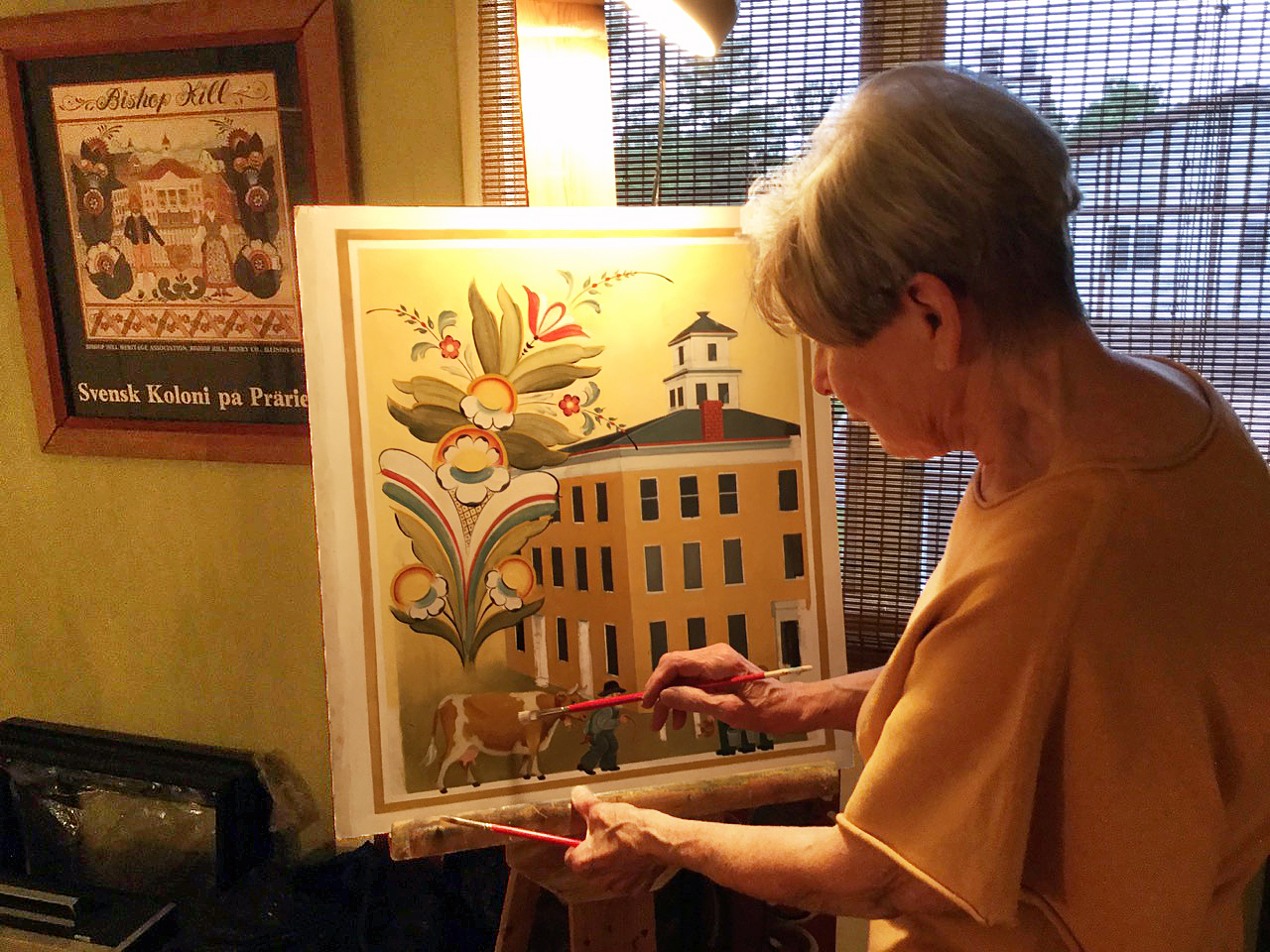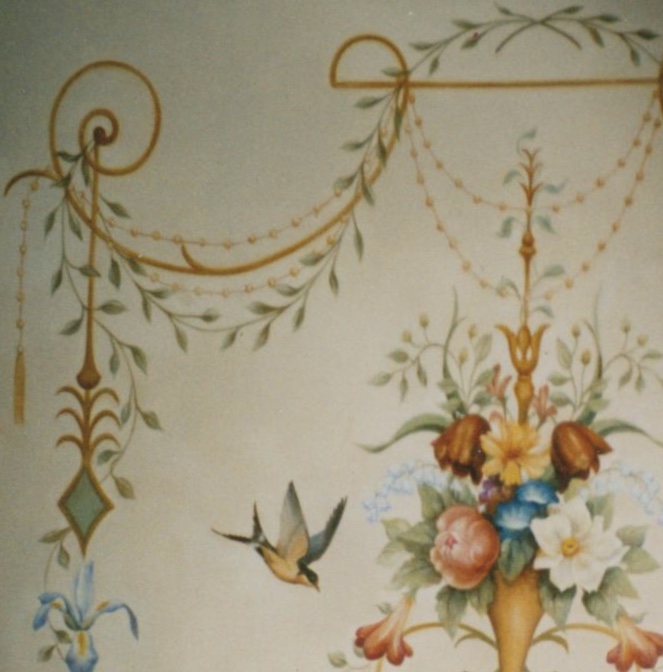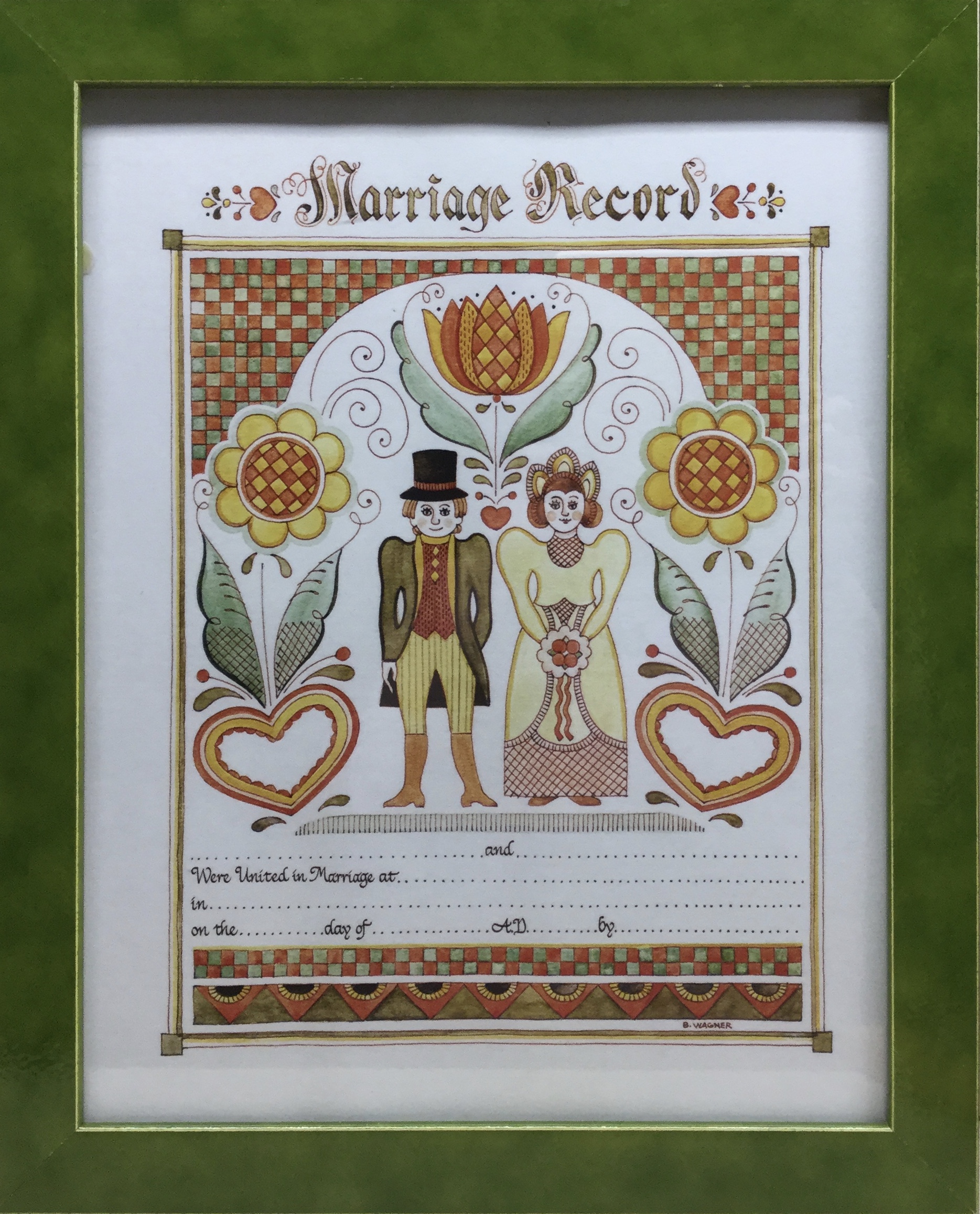Kurbits painters have more fun
The iconic, floral painting that grew out of a folk tradition more than one hundred years before the Swedish immigrants brought it to the U.S., has its own distinct style still in use today.
-
 Artist BJ Wagner works on a kurbits painting in her Princeton, Illinois studio.
Artist BJ Wagner works on a kurbits painting in her Princeton, Illinois studio. -
-
“It’s so much fun, it’s dressed up and festive. It’s a celebration!”
This isn’t a description of a typical Swedish midsummar festival (though it could definitely apply) but of the traditional Swedish folk art painting, called kurbits.
After a lifetime of making art of all kinds, BJ Wagner especially loves painting folk art, a passion that began at a young age when her grandfather brought her family a Dala horse from Sweden. When she started painting in the Norwegian rosemaling style, “the Swedish side of the family pulled out all these posters in the Swedish kurbits style,” she said. It was the first time Wagner had heard of it. She was thrilled and inspired.
"What distinguishes Swedish kurbits from Norwegian rosemaling is mainly the flowers. In rosemaling, the flowers are distinguishable, but in kurbits, the flowers are more unique and creative, and they often include ribbons." She is also drawn to all the color in kurbits, making it cheerful and a joy to paint. "I think the Swedish art is more fun, it has rhythm, and characters liven it up." -
 Detail of a panel Wagner painted at a hair salon in Chicago, Il.
Detail of a panel Wagner painted at a hair salon in Chicago, Il. -
-
Murals a favorite
Wagner is currently working on a kurbits mural, her favorite thing to paint, in which characters tell the story of a farmer bringing a cow to town. "All the traditional kurbits paintings tell stories. There are often people in them, dressed up and festive, celebrating an occasion such as a wedding, playing music and dancing."
The name kurbits comes from the Bible story in which God offers Jonah a large “cucurbita,” or gourd (eucurbitam), to protect him from the hot sun in the desert. Swedish writer Erik Axel Karlfeldt referenced it in his poem "Hösthorn" in 1927, because the shapes in these painting were reminiscent of the gourds, also thought of as cucumbers, effectively naming the art style that had already been prevalent in central Sweden for a century. It was most popular from 1720 to 1870, particularly in Dalarna. Today, many artists in Sweden are still actively painting in the kurbits style and it remains a very strong trademark, used by companies showing products of Dalarna, like Dalahorses, clogs, welcome signs and more. -
 Detail of a ceiling Wagner painted in Geneva, Il.
Detail of a ceiling Wagner painted in Geneva, Il. -
Using letters c and s for the special brush strokes
Wagner took classes to learn the very special brush strokes required for the particular technique in kurbits painting. The brush strokes — all variations on circles and the letters c and s — have been important in her understanding of folk painting, and in learning the freedom that comes when inspiration hits. “We were inspired by other artists' flowers before us but were encouraged to create our own style of flowers and designs, to never copy another flower. It’s always been that way — and that’s why there are so many kinds of flowers and images in kurbits paintings. You might find the same flower repeated by an artist because sometimes it has become that artist's trademark."
Wagner is semi-retired now, but one thing she continues to do is paint folk art — and Swedish kurbits, whenever she can. Her work is available online and in the upper Midwest, but what she wants most do is paint a kurbits kitchen. “I love to be 10- or 20-feet up in the air! I would go anywhere in the U.S. (or Sweden!) to paint a kurbits kitchen. Furniture, too.”
What are you waiting for? Find her at www.swedishkurbits.com -
 Hand painted by BJ Wagner: the salt box was made by a friend, and the candlestick and tin were found items she painted in the 1980s.
Hand painted by BJ Wagner: the salt box was made by a friend, and the candlestick and tin were found items she painted in the 1980s. -
Amanda Robison
-
 A hand painted kurbits poster for personalizing by Wagner, for sale on Wagner's website.
A hand painted kurbits poster for personalizing by Wagner, for sale on Wagner's website. -
 An example of a hand painted kurbits item for sale on Wagner's website.
An example of a hand painted kurbits item for sale on Wagner's website. -
-
